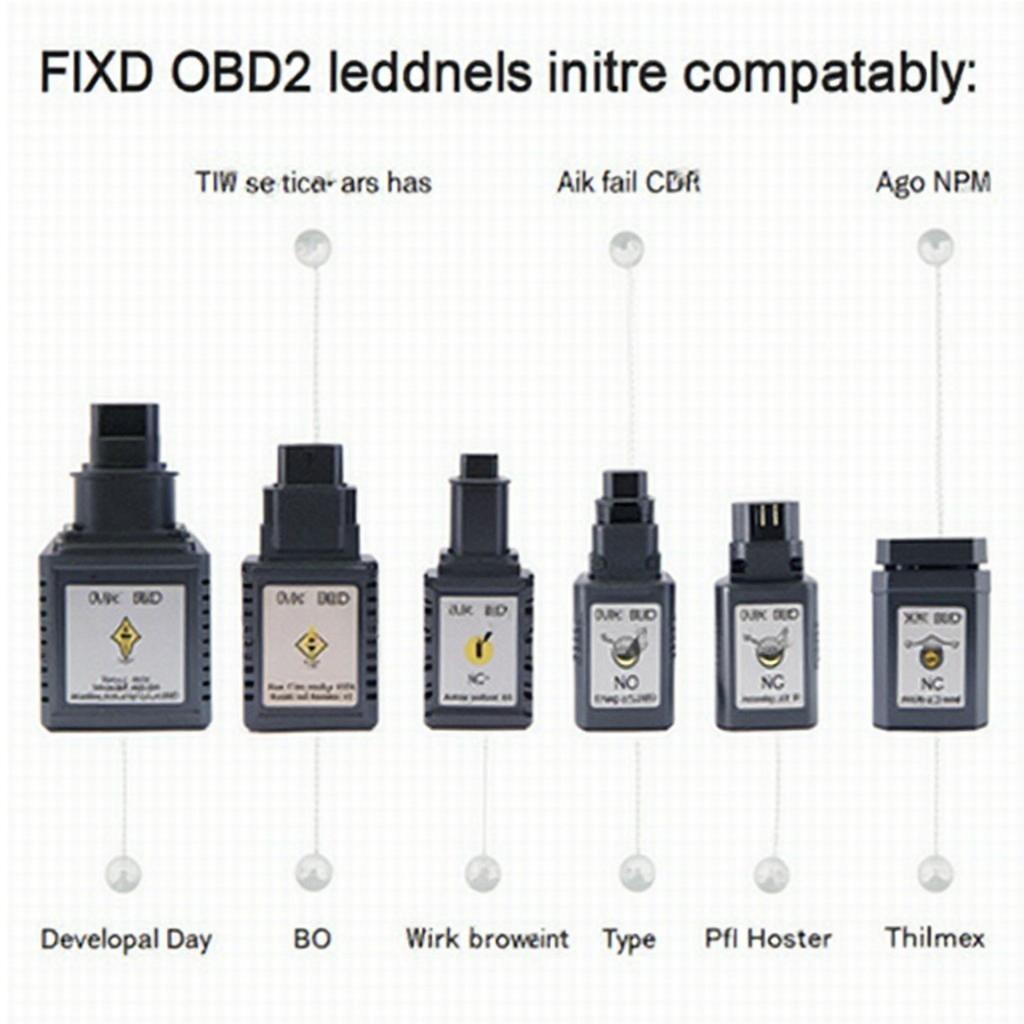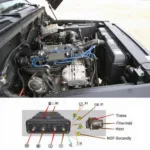The FIXD OBD2 sensor has revolutionized how we interact with our vehicles, offering real-time diagnostics and insights into potential issues. But what exactly is a FIXD OBD2 sensor, and how can it benefit you? This article will delve into the world of FIXD OBD2 sensors, exploring their functionality, troubleshooting common problems, and guiding you towards selecting the perfect sensor for your needs. Learn how to leverage this powerful tool to keep your car running smoothly and avoid costly repairs.
What makes FIXD stand out in the crowded OBD2 market? The device connects wirelessly to your smartphone, transforming it into a powerful diagnostic tool. This allows you to monitor your car’s health, understand those cryptic trouble codes, and even get maintenance reminders. If you’re in Australia and looking for reliable OBD2 scanners, you might want to check out the best obd2 Australia offers. You’ll find various options that can help diagnose and fix your car troubles.
Decoding the FIXD OBD2 Sensor
A FIXD OBD2 sensor is a small device that plugs into your car’s OBD-II port, typically located under the dashboard on the driver’s side. This port allows access to the vehicle’s onboard computer, which stores valuable data about its performance and health. The sensor acts as a bridge, translating this complex data into understandable information that’s displayed on your smartphone via a dedicated app.
How Does It Work?
The FIXD OBD2 sensor communicates with your smartphone via Bluetooth, transmitting real-time data from your car’s computer. The FIXD app then interprets this data, presenting it in a user-friendly format. You can view diagnostic trouble codes (DTCs), get clear explanations of what they mean, and even receive estimated repair costs. This empowers you to make informed decisions about your car’s maintenance.
Benefits of Using a FIXD OBD2 Sensor
Using a FIXD OBD2 sensor offers a range of advantages, from early problem detection to cost savings:
- Early Problem Detection: By monitoring your car’s systems continuously, the FIXD sensor can detect potential issues before they become major problems, saving you from expensive repairs down the line.
- Understanding Trouble Codes: No more guessing games with those confusing DTCs. FIXD translates them into plain English, explaining the problem and suggesting possible solutions.
- Maintenance Reminders: Stay on top of your car’s maintenance schedule with automated reminders for oil changes, tire rotations, and other essential services. Need to check if your OBD2 can detect an oil change in car obd2 detect provides helpful information on this topic.
- Monitor Multiple Vehicles: Manage the maintenance of multiple vehicles with a single app, simplifying your car care routine.
- Peace of Mind: Knowing you have real-time access to your car’s health provides peace of mind, especially on long trips or in unfamiliar areas.
Troubleshooting Common FIXD OBD2 Sensor Issues
While generally reliable, FIXD OBD2 sensors can occasionally encounter problems. Here’s how to troubleshoot some common issues:
Connection Problems
- Bluetooth Issues: Ensure your phone’s Bluetooth is enabled and that the FIXD sensor is within range.
- App Compatibility: Make sure you have the latest version of the FIXD app installed and that it’s compatible with your phone’s operating system.
Data Accuracy Issues
- Inaccurate Readings: Check that the sensor is properly plugged into the OBD-II port. A loose connection can lead to erratic data.
- Conflicting Data: Ensure you’re not running other OBD-II apps simultaneously, as this can interfere with FIXD’s performance.
“Regularly updating the FIXD app ensures compatibility with the latest vehicle models and operating systems, maximizing the accuracy of the diagnostic information.” – John Smith, Automotive Diagnostics Specialist.
Choosing the Right FIXD OBD2 Sensor
There are different versions of the FIXD OBD2 sensor available, each with varying features and capabilities. Consider the following factors when choosing the right one for you:
- Vehicle Compatibility: Verify that the sensor is compatible with your car’s make, model, and year. Knowing your obd2 requirement year will help in selecting a suitable sensor. For specific models, resources like the 10 best obd2 scanners for saab 9-5 can be incredibly useful.
- Features: Decide which features are important to you, such as real-time diagnostics, maintenance reminders, and trip tracking.
- Budget: FIXD sensors are available at different price points, so choose one that fits your budget.
 Various FIXD OBD2 sensor models showcasing their features and differences
Various FIXD OBD2 sensor models showcasing their features and differences
Conclusion
The FIXD OBD2 sensor is a valuable tool for any car owner, offering insights into your vehicle’s health and empowering you to make informed maintenance decisions. By understanding its functionality, troubleshooting potential issues, and choosing the right sensor for your needs, you can leverage the power of FIXD to keep your car running smoothly and avoid costly repairs. FIXD offers a simple and effective way to stay connected to your car’s health, giving you the confidence to hit the road knowing you’re prepared for anything. If you’re dealing with specific error codes, resources like subaru diesel obd2 codes can provide valuable information for diagnostics.
FAQ
- What is a FIXD OBD2 sensor?
- How does the FIXD sensor work?
- What are the benefits of using a FIXD sensor?
- How do I troubleshoot connection problems?
- How do I choose the right FIXD sensor?
- Is FIXD compatible with all car models?
- How much does a FIXD sensor cost?
Need help with your car diagnostics? Contact us via WhatsApp: +1(641)206-8880, Email: [email protected] or visit us at 789 Elm Street, San Francisco, CA 94102, USA. Our 24/7 customer support team is ready to assist you.
